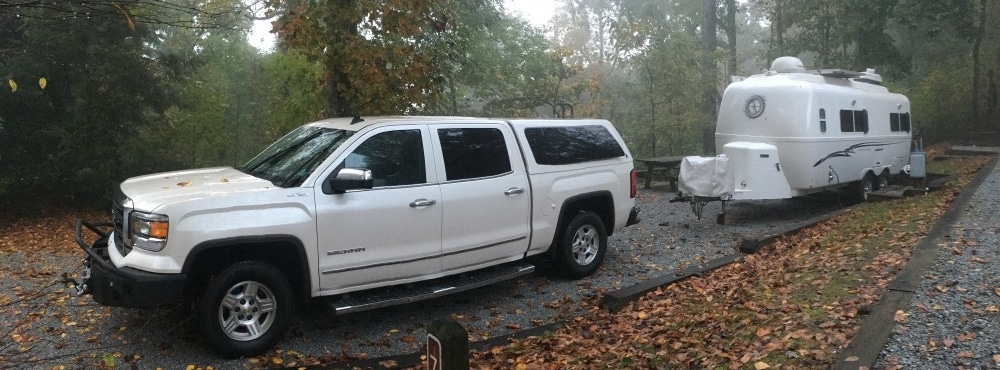-
Posts
3,287 -
Joined
-
Last visited
-
Days Won
169
Everything posted by ScubaRx
-
I agree with Mike. The only thing I would add would be if it were constantly exposed to sunlight the UV (might) damage the outside insulation. I truly don't know. If you are only trying to keep the batteries charged, you could consider buying or making a shorter cord dedicated to that one task. The cord that comes with the trailers is 10 awg. Cords that heavy might cost $3/foot for the wire and then the proper fittings for each end if you wanted to make up a dedicated one. A 12 awg cord can be bought relatively cheap locally and it will handle everything but possibly running the A/C. The proper ends would be like these: Male... Female...
-
Isn't this forum great? Everybody 1000 miles away helping you look! I do hope it's there when you look. There's hardly a greater feeling than finding something
-
Good advice... I helped a buddy build a barn years ago. He cautioned me against cutting the boards, saying "If you cut it too short, we can always piece it, but if you cut it too long, I don't know what we'll do!!!???" 😀🤪😉
-
If that’s it, from here on Frank shall be known as Ole Eagle Eyes.
-
I do not own the truma so I know only a little bit about them. It is my understanding that if the filter is removed it should be stored inside the compartment to the far right between the unit and the wall. That would be where I would expect them to put it after the exchange. Sometimes my expectations are greater than reality.
-
Off topic and I apologize for the drift. Do you plan to be at the NE Rally in June. We are coming up and hoped we could get to meet.
-
I was just messing with you. Although we don't own one, I've watched others use them and I agree it is much easier to use than moving the trailer. I saw a lady trying to drag a full one out of the back of her truck and it hit the ground and split open. This was out from Quartzsite and not on a slab of concrete. It made quite a mess that couldn't be cleaned up with a hose.
-
Let’s see, 20 gallons of fresh shite at about 10 pounds each. That tote could easily weigh in at 200 pounds or so. Don’t drop it on your foot or you will be loudly proclaiming to everyone within earshot what the contents are. 🤬😵💫
-
I wholeheartedly agree this is a much stronger solution than using the connectors that Andersen provides.
-
Depending on which model/engine your dad's taco has the towing capacity will vary between 3500-6400 lbs. Your Elite will weigh in at well over 4000 pounds loaded and ready to camp.
-
We were once stuck in Winslow, AZ with a major sand storm headed directly for us with predicted wind speeds around 40-50mph. A seasoned truck driver walked over to where we were parked and advised us to put the truck/trailer combo pointed into the wind with which ever end that was least important facing the oncoming wind. He claimed he'd seen the sand storms take all the paint off vehicles that were not oriented correctly into the wind. We took his advice and did not suffer any damage.
-

Opportunity for a FREE ZARCOR door window upgrade!
ScubaRx replied to hobo's topic in General Discussion
Does it block all the light coming in at night? -
If either or both of these valves are open, you would only have have water pouring out onto the the ground. There is no mixing valve in that area. The article referenced was about a setup in a motor home. None of its components and certainly not its plumbing layout would be the same as in our Oliver’s. I doubt this will be the solution to your issue.
-
For Hawaii, Spam is no mere novelty. On average, Hawaiians consume more than five cans of the stuff per person per year — more than any other U.S. state. SPAM: Special Processed American Meat. Personally, I'd rather have possum and sweet potatoes with a side of foie gras.
-

Leaking Propane Hoses to Regulator
ScubaRx replied to Wayfinder's topic in Mechanical & Technical Tips
Very nice setup, our unit was built in late 2013 and may well be in poor shape. I will check the hoses out tomorrow. -
This one is totally different but one of my exceptions to the 21st century rule. I first discovered it in a LG phone commercial back in 2016 starring Jason Statham. You'll notice that he plays every part in the video, well with the exception of the bulls. Busy Signal, Everybody Move Here's the whole song... In case you want to sing along here are the lyrics... [Intro] Turf... Bus'! Brrrup! [Hook] Da one yah name Watch me now Watch me now Watch me now Watch me now Watch me now Watch me now Bus'! Hott Ed! [Musical Interlude] Hey! Hott Ed, Hott Ed Bus'! Turf... Da one yah name Hott Ed, Hott Ed Hey Bus'! [Verse 1] Everybody fi a bounce Everybody fi a move Me see old, me see young inna dancing too Everybody to the group Stepping out, stepping out We a winner, cyaan lose Stepping out, stepping out People know me clean any time when me come out Me thing dem different, me style cyaan run out A no nothing regular, this cyaan burn out A dead inna your area, hotter than the sun out Move to the music, move to the music Tun it up, up, up, till you lose it Never confuse, abuse, nor refuse it No reggae, dancehall, different genre me fuse it So me see the young and the old dem a lose control And a music bring the joy to dem soul Watch me tun it up, tun it up, a so we roll Just listen keen to how the story unfold [Musical Interlude] Bus'! Hott Ed Yeah Bus'! Hott Ed Brrrup! Hott Ed Da one yah name Hey, hey [Verse 2] So when we... Touch the road, touch the road Dm no bad as we Fresher than Fresh Prince Badder than Bill Cosby See dem a run up and down like a Anansi Cyaan keep a good man down, like Kalonji Hey, me head a blaze like fire now And me have style fi spare like tire now Blaze the grades, burn it up to the sky yah now Inna me ears music a whisper yah now [Musical Interlude] Brrrup, brrrup, Bus'! Hott Ed Brrrup, Bus'! [Bridge] Well neat whenever you touch streets and On timing, move to the beat and Hold a vibe, hold joy, make dem see it and Get up! tun up! Come out of your seat and When the music hit, you say, "it's sweet" and Dem yah words weh Bob Marley speak and Build a vibes and celebrate life When your friend dem a meet and greet and [Musical Interlude] Hott Ed Turf... Hott Ed Yeah Bus'!
-
Having come into musical maturity listening to the Rock N' Roll of the late 50's and all through the 60's, I can attest that I've never been a Country music fan. By the mid 70's I was rather oblivious to what had become popular and I drifted thru the 80's and 90's really not paying much attention. One evening in mid 1999 as I was leaving to go home from work one of our technicians asked me if I had ever heard of a new internet site called Napster, I told him that I was not familiar with it and he explained that by using it, a person could (for free) download any song ever written. Being of a different ethnicity, I assured him that none of the music I would be interested in would be available there. Later, at home, I decided to look into the program. I downloaded the software, installed and then ran it. I don't remember the interface being too difficult asking only for an artist and song title. All of a sudden I could not think of a single song to download. Then I remembered one of my favorite songs from 1965, Bob Lind's Elusive Butterfly. I typed it in and hit enter. Almost immediately, a list of selections to choose from came up. I chose one and hit the download button. Well, this was still in the dial-up days of the internet and it took several minutes but it finally completely downloaded and I pressed play. Oh my goodness. It was at that second I had a sudden, intuitive perception or insight into the reality or essential meaning of something, initiated by the simple, homely, and commonplace task of downloading of a file (or as some might say, an epiphany.) It was at that moment I realized I wanted more songs, in fact I wanted all of them. So began a quest to download and catalog every Billboard Hot 100 song from 1940 to 1999. It took me 10 years. I now love the songs from the 80's and can tolerate most of them from the 70's. The 90's not so much. With a few exceptions, I skip virtually all the songs of the last two decades. This is one of my exceptions...
-
Ours has ridden >150K miles in the up position, 90% of the time with 80psi in the tires. I’ve found it down only a couple of times. It sounds as if some have not tightened the adjustment screws properly.
-

Oliver demos in Tampa area, week of RV Supershow
ScubaRx replied to SeaDawg's topic in Events & Rallies
No, there’s a group of us that will be headed toward Quartzsite during that time. -

Oliver demos in Tampa area, week of RV Supershow
ScubaRx replied to SeaDawg's topic in Events & Rallies
Phil Andrews will be there as well. -

Leaking Propane Hoses to Regulator
ScubaRx replied to Wayfinder's topic in Mechanical & Technical Tips
And getting a truck big enough to haul everything will get you admitted to the cool kids club. -
Here's wishing a Merry Christmas to all. Looking forward to seeing everyone at Quartzsite and/or The Rally. Steve, Tali, Reacher and Rocky
-
I'M NOT BANNING ARNOLD, you ban him. 😄







